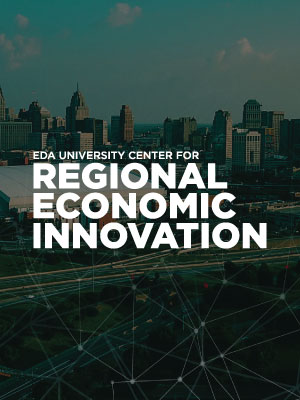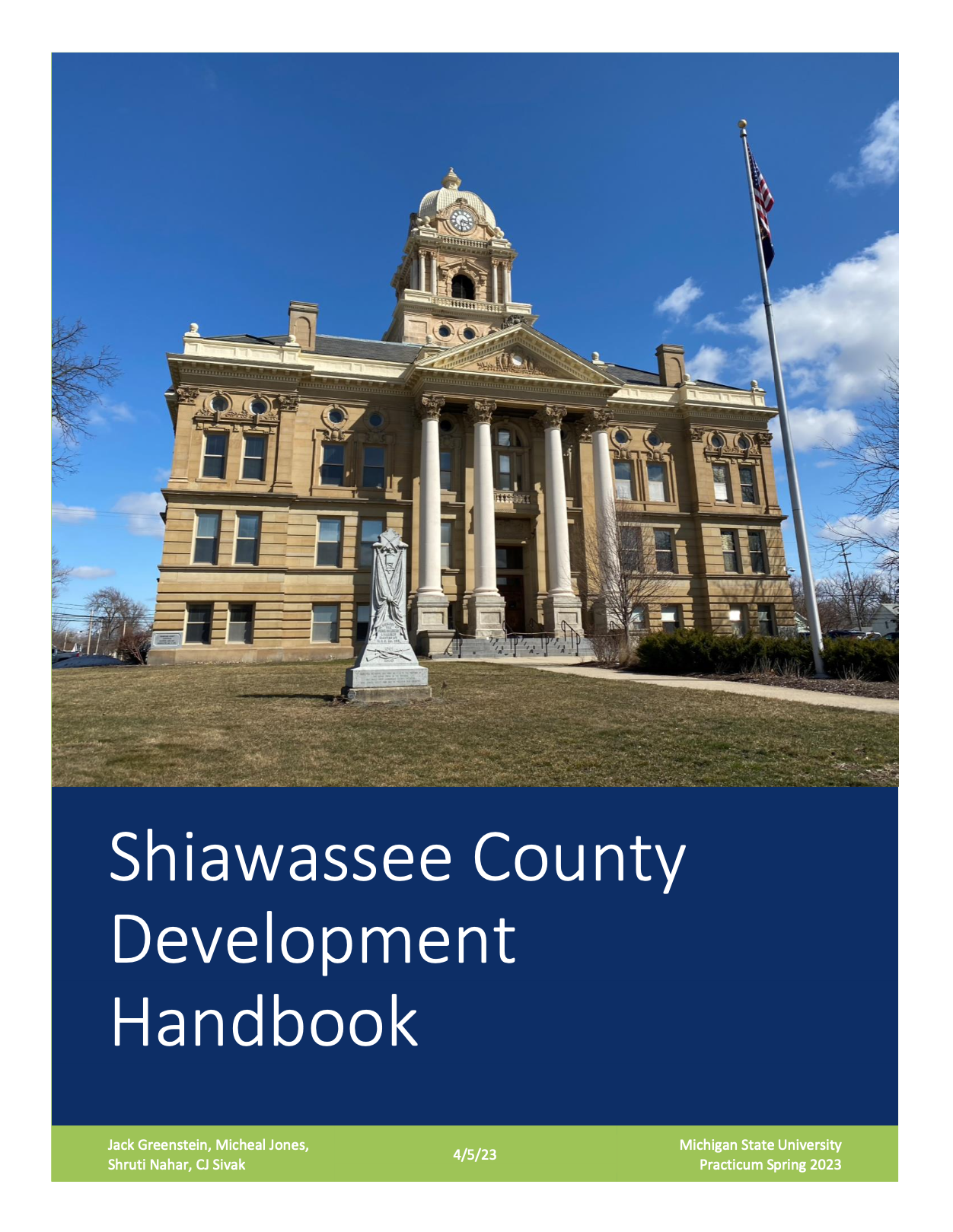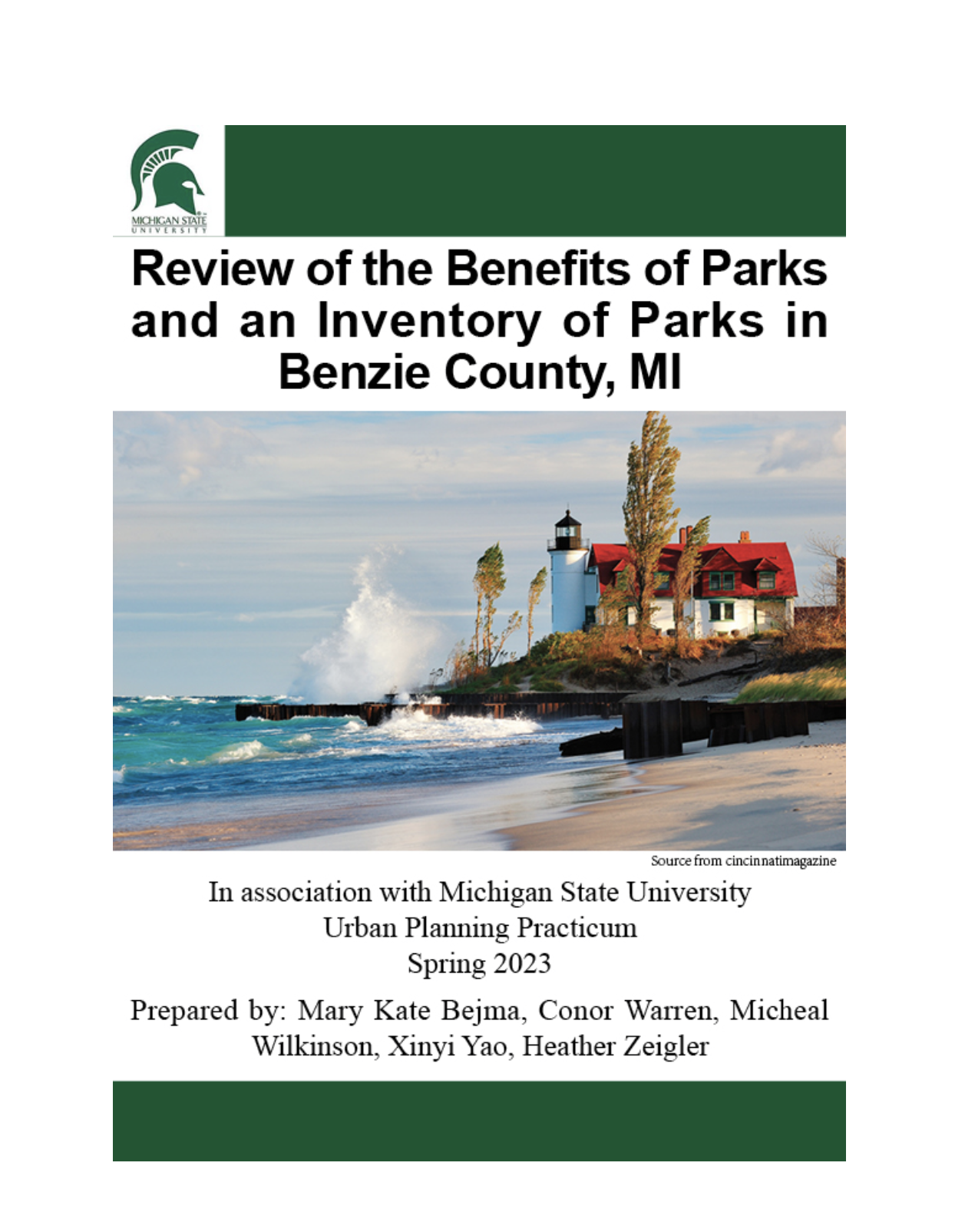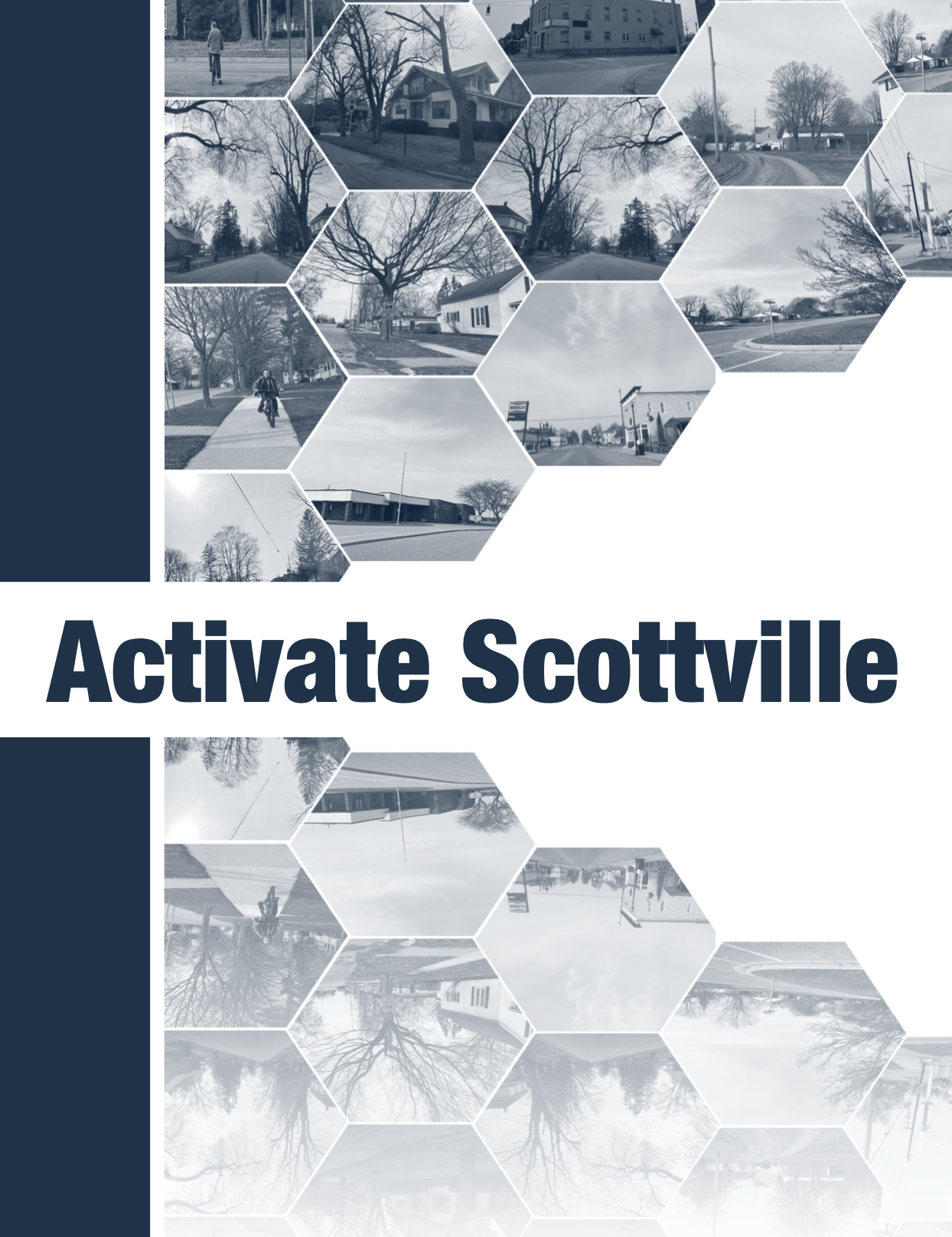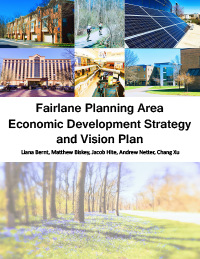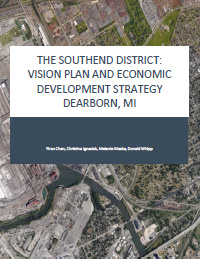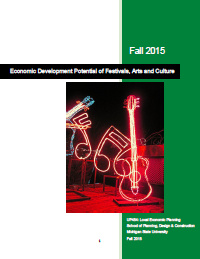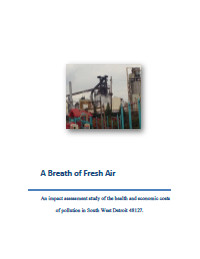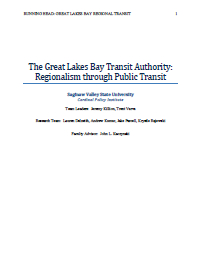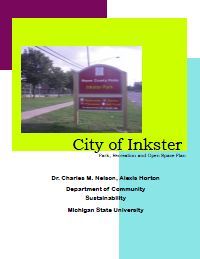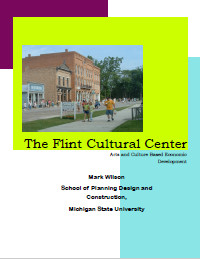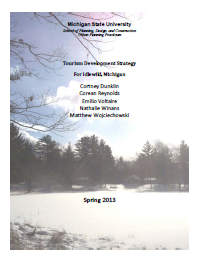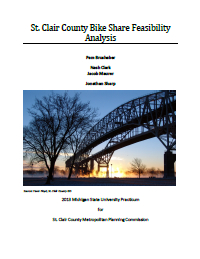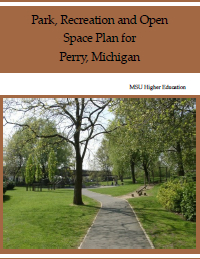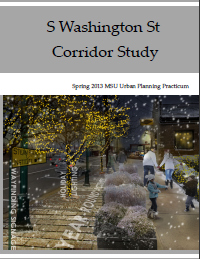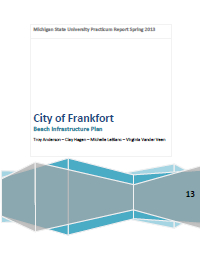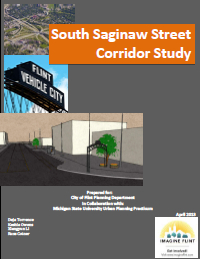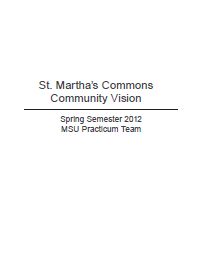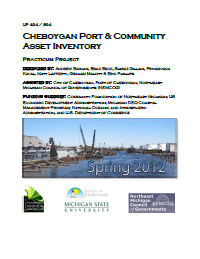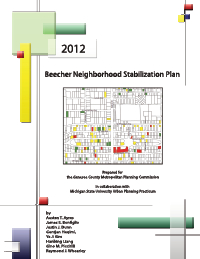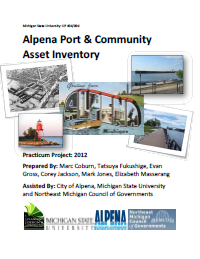Discovering and applying new and innovative economic development tools, models, policies, and programs
Creating Jobs and Wealth in Distressed Michigan Communities
Local Technical Assistance
-
Michigan Inventors Coalition Expo - August 14, 2025
Authors: Michigan Inventors CoalitionAbout the ProjectThe Michigan Inventors Coalition (MIC) is a non-profit organization dedicated to helping inventors bring their ideas to life and guiding them through the innovation process. MIC seeks to provide inventors and entrepreneurs with the tools, connections, and knowledge they need to succeed. Through monthly local groups, expert speaker sessions, one-on-one guidance, and collaborations with organizations like Michigan State University’s Regional Economic Innovation (REI) Center, MIC offers support to Michigan’s start up innovators.
REI continues to support the annual Michigan Inventors Expo, now in its 14th year. Scheduled for August 14, 2025, this event will bring together inventors, startups, small businesses, patent attorney, economic development professionals, and more.
Attendees gain access to expert panels and speakers: Top-ranked speakers share insights and guidance on critical topics for inventors and entrepreneurs; networking opportunities: Attendees connect with like-minded individuals, potential collaborators, and industry professionals who can help take their ideas to the next level; exhibitor space: Inventors showcase their products, ideas, or businesses while meeting individuals and organizations who can provide support; spin pitch & sell competition: A friendly competition where inventors hone their pitch skills, gain exposure, and compete for prizes.
-
2025: Van Dyke Corridor Plan & Implementation Strategy in South Warren, Michigan (MSU)
Authors: Reilly Allen, Hrilekha Bogapati, Josh Brink, Isaac Harter, Savannah Khan, Anish KhareRead the Report About the ProjectTo support the Warren CED’s mission to foster economic growth, the practicum team developed an implementation plan for strategic investment along the Van Dyke Corridor. This corridor falls within Warren’s Van Dyke Tax Increment Finance Authority (TIFA) District, which spans from 8 Mile Road at the Detroit-Warren border to Stephens Road at the Warren-Center Line border. The plan identifies the key investment opportunities, zoning recommendations, and targeted urban improvements to enhance economic development in the area. Through an analysis of existing plans and socioeconomic conditions within the corridor, the team developed strategic recommendations that align with Warren’s broader development goals. The final deliverables from the practicum team include a comprehensive implementation plan, updated zoning ordinance recommendations, a summary poster, and a presentation for their clients and community stakeholders.
-
2025: Enhancing Economic Growth through Air Quality Data Analysis and UX Design in Low-Economic Regions of Michigan (MSU)
Authors: Dr. Dirk ColbryAbout the ProjectThis SLFG project supports a collaboration between a team of 4-5 students in the Michigan State University undergraduate Data Science Capstone Course and JustAir, a Michigan-based startup focused on air quality analysis in Michigan.
This investment and work in community will help JustAir develop tools to better monitor air quality in Michigan. The project will focus on Wayne County and will involve outreach to local stakeholders.
Capstone students will work with air quality data (e.g., PM2.5, PM10, ozone, NO₂), meteorological data, and external sources such as traffic and wind patterns to build analytical frameworks and visualization tools; in addition to another student from the MSU UX (User Experience) program to address user interface or user experience design—a critical component for ensuring that the tools developed are accessible and impactful for community stakeholders. The project will also include designing user interfaces in Figma (UX Software) for JustAir’s client-facing platform.
-
2025: Delhi Charter Township and Watertown Township Sign Bylaw Revision (MSU)
Authors: Shae Burnham, Tess Chargo, Trinitti Hadley, Cole Maxon, Luis Palero, Jacob SmalecRead the Report About the ProjectSign Ordinance Compliance, Zoning, and Research is a student-led project responsible for examining and enhancing the sign regulations within the Zoning Ordinances of Delhi Charter Township and Watertown Charter Township. This project was completed in two primary sections: research phase and recommendations. Research included field observations along with an in-depth review of relevant court cases and legal precedents to identify legal vulnerabilities. Legal frameworks, particularly those dealing with the First Amendment and Michigan decisions, were reviewed to assess compliance. All research done contributes to the following components of best practices: clear purpose alignment, content-neutral definitions, clear severability & substitution clauses, clear standards for measuring sign dimensions, clear prohibited and exempt signs, broad content-neutral categories organized within zoning districts, and special concerns around digital signs and recent case laws. The research report provided both Delhi Charter Township and Watertown Charter Township with tools to improve their signage section within their Zoning Ordinance. By grounding recommendations in physical attributes, both townships are equipped to better manage signage to promote safety, aesthetics, and address local concern.
-
2025: Changing the Paradigm: Mobilizing Community Investment Funds Event
Authors: National Coalition for Community CapitalRead the Report About the ProjectAs part of the 2025 project year, the Regional Economic Innovation (REI) initiative is supporting the National Coalition for Community Capital (NC3) in hosting Changing the Paradigm: Mobilizing Community Investment Funds, a transformative in-person event scheduled for March 7, 2025, in East Lansing, Michigan.
Changing the Paradigm: Mobilizing Community Investment Funds will delve into the critical and evolving role of community investment funds, offering attendees the chance to learn from leaders at the forefront of the community capital movement. Participants can expect expert-led, interactive discussions, and invaluable networking opportunities designed to equip attendees with the necessary resources and connections to support their own community's investment fund.
-
2025: BuyFlint Initiative: Connecting Local Businesses to Corporate Procurement Opportunities
Authors: Laura SigmonRead the Report About the ProjectThe BuyFlint Initiative aims to strengthen Flint's local economy by connecting small businesses and microenterprises with procurement opportunities from larger corporations and public institutions. This initiative focuses on identifying and supporting local businesses through capacity-building programs, resource alignment, and a new BuyFlint directory. The project targets underserved populations and businesses, particularly those in Opportunity Zones, to foster economic resilience and local supply chain development.
The initiative includes mapping and categorizing businesses, offering workshops and mentorship for procurement readiness, creating an interactive business directory, and engaging corporations to source goods locally. It aims to increase local procurement by 12% within the first year and improve the readiness of at least 50 businesses to meet procurement demands. The results will be shared through reports, presentations, and digital platforms, with the goal of creating a replicable model for strengthening local economies in similar distressed communities.
-
2024: The City of Flint: Building Upon the Existing Neighborhood Plan with Particular Focus on Economic Development and Identified Historic Business Corridors
Authors: Joseph Allen, Tony Nikolovski, Anne Dudley, Joseph Kidd, Dan WilsonRead the Report About the ProjectThe City of Flint adopted the Imagine Flint Master Plan in 2013, which led to the development of neighborhood plans in subsequent years. One such plan was for the Civic Park Neighborhood (2019), home to the historic Civic Park subdivision, recognized as one of the first planned subdivisions in America. Originally established for plant workers in Flint, the neighborhood experienced a rapid decline following the closure of the automotive industry and the subsequent departure of workers from the area. This study aims to build upon the existing neighborhood plan, particularly focusing on economic development and identifying historic business corridors. The goal is to delve deeper, update, and envision how these plans can be brought to fruition. Vacant corridors within the Flint community present untapped opportunities for transformation. These corridors offer significant potential for development. Thus, this study aims to create a welcoming and attractive space that can benefit both residents and local businesses in the Flint area.
-
2024: St. Johns North Gateway Project
Authors: Thomas Boss, Sommer Nafal, Gaurav Sagvekar, Tyler Schewe, Josh SheltonRead the Report About the ProjectThe North Gateway Project Goal is to embark on a catalytic project by which momentum can be brought to this site via creative ways to honor the history of this region, provide visionary ways to redevelop this property via mixed uses of housing and retail/commercial spaces, and gain support for line-item funding for blight elimination/demolition of all or some of the remaining silos on this site.
-
2024: MorningSide Neighborhood on Detroit’s East Side
Authors: Escarleth Cucurachi Ortega, Monica Guo, Peyton Jackson, Charlotte Peterson, Paige SmithRead the Report About the ProjectThe MorningSide neighborhood on Detroit’s east side is well positioned to receive significant funding to upgrade its aging single-family housing stock. To receive such funding, a professional analysis of current housing conditions and needs is required. Three area nonprofit organizations, U-SNAP-BAC Nonprofit Housing Corporation, Habitat for Humanity Detroit and the MorningSide Community Organization have joined forces to request assistance from MSU students in the Urban and Regional Planning Program.
Exterior building conditions of vacant and occupied houses across the 190-block neighborhood can be surveyed and compared to previous condition studies such as the Detroit Residential Parcel Survey. Interior home repair needs can be estimated through resident interviews (random sampling), email questionnaires and focus groups.
-
2024: Master Plan Update, East Lansing
Authors: Andrew Arbaugh, Hannah Prins, Jordan Swiler, Herlin Rumar, Rolinof WanmaRead the Report About the ProjectAs part of the planned 2024 Master Plan update, the City of East Lansing seeks to engage all members of the community, including MSU students living on- and off-campus. The objective is to design and implement an engagement strategy to accomplish this goal.
-
2024: Lady Bug Center at Churchill Gardens
Authors: Oliver Gomez, Harrison Hill, Vivian Morales, Garrett Young, Havien GibsonRead the Report About the ProjectThe Ladybug Center at Churchill Gardens in Lansing, MI, aims to transform into a regenerative development, addressing environmental challenges exacerbated by Michigan's automotive industry. This project aims to go beyond sustainability by actively eliminating carbon and achieving a net-zero future. Focused on regenerative agriculture and housing, the community project aims to improve soil health, reduce waste, mitigate climate change, and enhance economic and social well-being. The proposed development includes single-family homes, apartments, retail space, a farm, and community gardens, designed in an ecovillage format on 8-12 acres in southwest Lansing. The project aims to measure its impact through quantifiable carbon credits and compliance with climate action project standards.
-
2024: Consumer Plastic Consumption, Reuse and Recycling in Upper Peninsula Michigan
Authors: Jelili Adebiyi, PhDRead the Report About the ProjectThe increasing global plastic production, projected to reach 1,124 million tons by 2050, poses significant sustainability challenges. The environmental consequences include massive economic losses, with 80-120 billion dollars lost annually globally due to short single-use plastic cycles. Despite efforts to address the issue, a substantial amount of plastic, both globally and in the United States, ends up in landfills, contributing to pollution and ecosystem losses. Stakeholders, including governments, scientists, and the public, have taken actions to mitigate plastic-related issues. However, there remains a crucial need for extensive consumer education on plastic sustainability, recycling practices, and reduced single-use consumption. The proposed research project aims to address these gaps by conducting a case study on consumer plastic behaviors in Marquette, Michigan, exploring factors influencing plastic consumption, reuse, and recycling knowledge and behaviors. The study would be undertaken in collaboration with Recycle906, Marquette County solid waste management authority. The findings from the study will be used to propose recommendations on how the plastic consumption footprint in Marquette can be reduced.
-
2024: Co-Constructing Circular Economic Opportunities Through University Waste to Organics Diversion Program
Authors: Jelili Adebiyi, PhDRead the Report About the ProjectMore than 108 billion pounds of food is wasted in the U.S. yearly, causing enormous economic loss and negative enviro-climatic impact. Most wasted food ends in landfills and is a major source of methane emissions in the U.S. Universities and colleges across the country are major food wasters. This presents circular economic opportunities for food waste diversion from landfills and repurposing into organic material for improved soil health and agricultural productivity. This project addresses this as it explores the opportunities for the diversion of food waste that is generated at Northern Michigan University dining to produce vermicompost.
-
2024: City of Utica: Downtown Sub-Area Plan Proposal
Authors: Bresgath Ayomi, Khayci Bryant, Noah Jones, Gabriela MiaganyRead the Report About the ProjectThe City of Utica, a small community in west-central Macomb County, faces unique development challenges, including brownfield sites and a lack of cohesive development along Auburn Road. In collaboration with the Macomb County Department of Planning & Economic Development, Utica is launching a comprehensive effort involving local government, community organizations, businesses, and residents. The focus is on completing a Comprehensive Master Plan update and creating a sub-area plan for the Downtown District to address issues such as vacant parcels, automotive and industrial uses, and empty storefronts. The primary goal is to enhance the overall quality of life, economic vitality, and attractiveness of the downtown area, with considerations for the potential relocation of municipal buildings to facilitate mixed-use development.
-
2024: Attitudes Toward and Knowledge Gaps about Equity Among Practicing Planners Part II
Authors: Carolyn G. LohRead the Report About the ProjectPart two of this project relates to the extensive responses received to the open-ended questions on the initial survey. Additional qualitative analysis beyond the original scope of the project will allow for a more thorough investigation of the remaining two research questions: What do planners think equity means? And what types of equity policies have Michigan communities adopted?
This project seeks to contribute to the conversation around what equity means in different contexts in Michigan and how planners can help their communities adopt more equitable policies.
-
2024: Attitudes Toward and Knowledge Gaps about Equity Among Practicing Planners Part I
Authors: Carolyn G. LohRead the Report About the ProjectThe American Institute of Certified Planners (AICP) Code of Ethics calls upon all practitioners to “incorporate equity principles and strategies as the foundation for preparing plans and implementation programs to achieve more socially just decision-making.” However, the reality of planning with equity in mind is complicated. Some planners work in communities that broadly support equity goals; others do not. Some planners work in communities with the resources to create major public investments, while other planners must try to improve equity in very under-resourced communities. Planners in private practice must balance their own principles with the need to retain clients, who may have their own priorities. Increasing the emphasis on social equity in urban and regional planning is a core goal of both the academic association (ACSP) and the professional association (APA) of planners in the US. In Michigan, the Social Equity Committee of the Michigan Association of Planning (MAP), the Michigan State chapter of the American Planning Association, has in recent years conducted research on how local governments are incorporating equity goals into their comprehensive plans. This Student-Led Faculty Guided project seeks to identify attitudes toward and knowledge gaps about equity among practicing planners to help direct future research efforts.
-
2024: Analysis for Potential Economic Development on both sides of Southfield/Detroit and Oak Park/Detroit Borders
Authors: Rayman MohamedRead the Report About the ProjectThis SLFG project will work with the 8 Mile Boulevard Association to conduct an analysis of the potential for economic development on both sides of the Southfield/Detroit and Oak Park/Detroit borders. The key elements of the project and corresponding plan will include: Development of a database of potential redevelopment sites; Uniform design guideline recommendations; Recommendations for improved public transportation infrastructure; Survey of current business owners and residents on existing conditions.
-
2024: A Regional Model for Small Business Prosperity
Authors: Robert Carson, AICP and Zachary VegaRead the Report About the ProjectThis is a case study of four Michigan Works! program services in Northwest Lower Michigan. This study will provide a comprehensive review of the program’s small business development services and their impact in statistically underserved communities through descriptive statistical analyses and stakeholder interviews. The researchers will identify the regional referral methods that client small businesses have found most effective in their development, develop a survey instrument that identifies program strengths, areas for improvement, and financial impact, and how these methods could be replicated throughout Michigan. While Michigan Works! has been around since 1996, there are very few analyses of its overall effect on small business referrals from a regional perspective. Research into the programs would help to identify strengths and weaknesses and could help other regional entities such as chambers of commerce, county governments, and industry leaders to potentially replicate the programs’ referral methods. These best practices would be influential in helping distressed local communities build their economic bases.
-
2023: Shiawassee County Development Handbook
Authors: Jack Greenstein, Micheal Jones, Shruti Nahar, & CJ SivakRead the Report About the ProjectShiawassee County is a low-population rural county that lacks the resources commonly found in larger metropolitan areas. The existing capacity for change is limited, and the County’s fragmentation of local government entities creates unique identities and rules. There are twenty-eight governmental entities in Shiawassee County. While some townships are still under county jurisdiction for planning, several townships have pulled out and begun to plan independently in recent years. Because of financial limitations, the ability to hire is lacking throughout the County. The County needs to attract more business and development opportunities. This project seeks to find ways to improve the planning process to aid Shiawassee Economic Development Partnership to make it easier and more desirable for businesses and developments to locate in Shiawassee County.
-
2023: Review of the Benefits of Parks and an Inventory of Parks in Benzie County, MI
Authors: Mary Kate Bejma, Conor Warren, Michael Wilkinson, Xinyi Yao, & Heather ZeiglerRead the Report About the ProjectThis study will answer the overarching question of, ‘Is establishing a county parks and recreation director for Benzie County feasible based on current conditions?’ The purpose of this project is to help the Benzie County Recreation Commission and the County Board of Commissioners to conduct a feasibility of the County’s ability, or lack thereof, to have a sustained recreation director on staff. Additionally, this study will provide experience and exposure working with a planning commission and developing a professional planning report.
-
2023: Leveraging the Planning Process to Create a Model of Engagement for Communities in Need
Authors: Jake ParcellRead the Report About the ProjectLeveraging the planning process to improve the results of regulations and development for communities is the quintessential function of what municipal planners, consultants, and volunteer boards and commissions strive to accomplish. In Michigan, this process is accomplished through decades worth of empirical research combined with guidance from state statutes like the Michigan Planning Enabling Act (MPEA) (2008) and Michigan Zoning Enabling Act (MZEA) (2006). However, the process has a tendency to fail underserved communities that do not have the capacity to engage their population at the regional level. This Co-Learning Plan (CLP) seeks to create policy recommendations based on best practices and public feedback to leverage the planning process for the greatest impact in our overstretched communities.
This CLP will accomplish this by creating a review of the shortcomings of planning processes and the problems presented to decision-makers via public meetings. Furthermore, this CLP will review the shortcomings on the community’s behalf, such as communication barriers, internet access, and costs. After this research is compiled each facet of the planning processes will be broken down into a matrix that highlights the best practices at each phase. This matrix will be sent out for community review, in which the most effective steps of the process will be highlighted and then standardized into a recommendation for communities to improve their planning processes.
The formal planning process can be lengthy and difficult, which includes an ample amount of public participation and volunteer action from start to finish. Ultimately, the results of the public input session of this paper focused heavily on achieving consensus, communicating effectively with difficult to reach populations, managing the timeframe and costs of the planning process, and helping to enable staff to facilitate the process. These recommendations can help local board and commission members visualize
the planning process from start to finish and make recommendations for amending statutes that will help streamline planning in Michigan. This CLP is the first step towards helping communities who need ways to increase their capacity to utilize the planning process for the best results. This CLP received a high level of participation from volunteers across the state; and seeks to move forward with more outreach and research.
-
2023: Collaborative Partnership Models: A Case for Increased Capacity and Efficiency
Authors: Robert Carson, AICP, Zach Vega, AICPRead the Report About the ProjectThis paper examines an ongoing vexing problem in Northwest Lower Michigan’s township government structure and a proposed solution. For the first time since the 1960’s and 1970’s, much of the 10-county Northwest planning region (Antrim, Benzie, Charlevoix, Emmet, Grand Traverse, Kalkaska, Leelanau, Manistee, Missaukee, Wexford) is experiencing rampant growth. As a result, there are myriad planning themes that the largely rural area has not had to contend with in decades due to increased demands on factors such as land use, housing, transportation, permitting and conservation. Municipal leaders have had to face land use planning challenges most often experienced in places like Grand Rapids or Ann Arbor, established centers of commerce and population. This paper begins by examining the trends in the planning profession that call for greater technical professionalism in the region and the current governmental structures that are making it difficult for this professionalism to exist widely in Northwest Michigan. The authors then summarize an anecdotal survey of three different collaborative planning models at the county level to provide various solutions to this problem, with all three consisting of the same proposed structure: a collaborative planning model.
-
2023: Activate Scottville
Authors: Sebastian Bies, Freddy Horta, Gauri Mhatre, Kole Nicholoff, & Isha PithwaRead the Report About the ProjectThe City of Scottville is lacking basic walking infrastructure throughout the city, making it difficult and dangerous for children to walk and bike to school. These same issues have made it difficult for residents to access important landmarks, such as a mushroom factory that is the largest employer in the area. Furthermore, the sidewalk issues, along with excessive parking options, have contributed to an unlively downtown area. This project will help to create a plan for the City of Scottville for reliable and safe walking routes for all residents that can connect important sites, while revitalizing downtown.
-
2021: Energy Challenges in the Keweenaw: Recruiting the Community to Develop Innovative, Acceptable Solutions and Local Supply Chains
Authors: Melissa DavisRead the Report About the ProjectWith this fellowship, there is the opportunity to assist Copper Country residents in two ways. The first is to work with Keweenaw County residents to learn about, research and vet potential municipally-owned renewable generation sites and also consider which types of generation yield different potential revenue streams. This process involves reaching out to interested residents and asking them to commit to a four month process of volunteering 1-2 hours a month. It starts with a hour tutorial to get people up to speed on energy concepts and vocabulary, then finding out which area of the project they are most interested in, then dividing into smaller research groups for two months. They are then asked to share the results of their research with the larger group (at the end of the 4 months) and this group will look at all of the information and vote for their most preferred top three projects.
The second part of this fellowship-project is to work with Michigan Technological University's MakerSpace students and Houghton High School National Honor Society students to prototype and develop products that can be made cost-competitively in our area, and test-market them locally to evaluate if enough revenue could be generated to start small businesses to produce them. Through our test-marketing, the hope to also develop a customer base. Ideally, through this process, several products and also responsible entrepreneurs who would like to start a small business, whose startup costs could be crowd-financed. -
2018: Village of Sebewaing Sea Kayaking, Walking, and Recreation Study
Authors: MSU School of Planning Design and ConstructionAbout the ProjectThe Village of Sebewaing is in the beginning stages of their first Master Plan in over thirty years. To include the Village's wonderful yet underutilized natural resources, this plan will take into account factors unique to Sebewaing. Due to budget constraints, this fiscally distressed community is seeking the help of the MSU Urban and Regional Planning Practicum Program, to incorporate a kayak presence and walking path into attainable goals within the Village of Sebewaing Master Plan. Students will help evaluate current kayak and walking trends, analyze data for feasibility, identify the best potential site(s), and formulate strategies for implementation to create a more navigable community for residents and visitors alike. This has the potential to spur future revitalization and economic growth for downtown Sebewaing and surrounding areas.
-
2018: Downtown Durand Development Strategy
Authors: Michigan State University School of Planning, Design and ConstructionRead the Report About the ProjectThe City of Durand is in the process of updating its 2004 Downtown Economic Enhancement Strategy. Home to roughly 3,400 residents, the City hosts a population that is 64% low to moderate income (LMI). The community has made great strides to improve and beautify the downtown district, but it still struggles to attract and retain viable local businesses. The goal of updating this plan is to develop a comprehensive strategy for attracting, retaining, and growing local businesses in the historic downtown. It will include performing basic market research, implementing a community wide survey, and incorporating new data into the existing plan parameters to identify recommendations and implementation strategies. For example, identifying business development strategies that target high demand commercial uses.
-
2017: Fairlane Town Center
Authors: Dr. Zenia Kotval, Michigan State University & Jeff Polkowski, City of DearbornRead the Report About the ProjectThis project focused on the automobile-oriented Fairlane Planning Area located in the center of the City. Dearborn planners inspired the students to develop a redevelopment project to integrate the mall site with the rest of the Dearborn community. It was the City's goal to partner with MSU student planners to create a Vision Plan and Economic Development Strategy that will include recommendations for connectivity, beautification, urban design and redevelopment opportunities. The City would like to attract commercial and residential redevelopment, improve connections between the east and west Dearborn, identify underutilized land, and enhance pedestrian access.
Project Updated As Of September 30th, 2017
-
2016: The Southend District: Vision Plan and Economic Development Strategy
Authors: Yiran Chen, Christina Ignasiak, Melanie Nieske, & Donald Whipp, Michigan State UniversityRead the Report About the ProjectBy creating a vision plan and economic development strategy for the Dix-Vernor Corridor, the City of Dearborn will be able to take advantage of planning and redevelopment efforts to improve the Dix-Vernor District.
Project Updated As Of September 30th, 2016
-
2015: Impact Assessment of Community Arts and Cultural Programs in East Lansing
Authors: Michigan State UniversityRead the Report About the ProjectThis project focused on the economic contribution of festivals in small and medium sized cities along with a case study of the impact of East Lansing's Summer Solstice Jazz Festival (SSJF). The emphasis was on measuring and assessing the financial impact of community arts and cultural programs along with examples and case studies of events and festivals contributing to community development.
Project Updated As Of September 30th, 2015
-
2014: Impact Assessment of Pollution in Southwest Detroit
Authors: Madonna UniversityRead the Report About the ProjectThis project was an impact study of the health and economic costs of pollution in Southwest Detroit. The main objective of the study was to apply existing knowledge and evidence about health impacts in Southwest Detroit to specific social and community contexts.
Project Updated As Of September 30th, 2014
-
2014: Great Lakes Bay Regional Transit Study
Authors: Jeremy Killion, Trent Varva, Lauren Delzeith, Andrew Kumar, Jake Parcell, Krystle Rajewski, John Kaczynski, Saginaw Valley State UniversityRead the Report About the ProjectThe Cardinal Policy Institute researched the feasibility of a regional public transit authority for the Great Lakes Bay region. Using examples of successful regional mass transit authorities, this system intended connect Saginaw, Bay City, Midland, Birch Run, Mt. Pleasant, and Standish Michigan.
Project Updated As Of September 30th, 2014
-
2014: City of Inkster: Park, Recreation and Open Space Plan
Authors: Charles S. Nelson, Alexis Horton, Michigan State UniversityRead the Report About the ProjectThis project focused on updating the five year Park, Recreation and Open Space Plan of Inkster, Michigan. It involved public listening sessions, a mail survey to a sample of registered voters, and development of a draft plan.
Project Updated As Of September 30th, 2014
-
2014: Arts/Culture Based Economic Development in Flint
Authors: Mark Wilson, Michigan State UniversityRead the Report About the ProjectThe Flint Cultural Center (FCC) offers great potential to serve community interests and needs to leverage tourism, to foster creativity and knowledge development, and to serve as an anchor for placemaking around Flint. This project used the FCC as a case study in economic development potential analyzing opportunities for the FCC as well as linking FCC opportunities to the arts and culture elements of the Flint Master Plan.
Project Updated As Of September 30th, 2014
-
2013: Tourism Development Strategy for Idlewild, Michigan
Authors: Cortney Dunklin, Corean Reynolds, Emilio Voltaire, Nathalie Winans, Matthew Wojciechowski, Michigan State UniversityRead the Report About the ProjectThe purpose of this project was to help with the revitalization of Idlewild as a tourist destination. To accomplish this, students partnered with the Idlewild Community Development Corporation to assess Idlewild's cultural and historical assets and potential tourist market.
Project Updated As Of September 30th, 2013
-
2013: St. Clair County Bike Share Feasibility Analysis
Authors: Pam Brushaber, Nash Clark, Jacob Maurer, Jonathan Sharp, Michigan State UniversityRead the Report About the ProjectThis project identified whether a bike share program could be successful as a placemaking element, providing an additional, green transportation choice to residents and visitors in a smaller urban area with key tourism, recreation, and cultural assets. The objectives of the proposed Bike Share Feasibility Study includes a historical overview of what a bike share program is and how it is has evolved, including a scan of best practices.
Project Updated As Of September 30th, 2013 -
2013: Park, Recreation and Open Space Plan for Perry, Michigan
Authors: Dr. Charles Nelson, Shannon Mazurie, I-Chun Wu, Michigan State UniversityRead the Report About the ProjectWorking in cooperation with City of Perry representatives, Dr. Chuck Nelson and a number of his graduate and undergraduate student assistants, proposed to update the plan per the specifications of the Michigan Department of Natural Resources (DNR) and the eligibility criteria of the MNRTF as described in the Community Park, Recreation, Open Space and Greenway Plan Certification Checklist (PR 1924-1) published by the Michigan Department of Natural Resources. The goal in this process was to have a plan that would make the City eligible to apply for an MNRTF grant in the April 1, 2014.
Project Updated As Of September 30th, 2013
-
2013: Meridian Mall Sub-Plan
Authors: About the ProjectGerman urban planning students from Dortmund University School of Architecture teamed up with MSU School of Planning Design and Construction students to conduct a five day visioning session focused on the Meridian Mall property in Okemos, Michigan. The students looked at the property as a blank slate and others focused on a reuse or a conversion of the existing building. The results of this visioning became a part of the Meridian Mall project that is a part of the Capital Access Initiative and the Corridor development study funded by Michigan State Housing Development Authority (MSHDA) and U.S. Department of Housing and Urban Development (HUD).
Project Updated As Of September 30th, 2013
-
2013: City of Owosso: Washington Corridor Plan
Authors: Ken Hunter, Sam Schultz, Ryan Musser, Jessica Wendlandt, Jia ZhuangRead the Report About the ProjectThe goal was to enhance the corridor between Baker College and downtown Owosso by focusing on the built environment including connections, gateways, and the streetscape. They wanted to create a sense of place capable of stimulating economic growth and building social equity. This project provided an assessment of the development area in terms of size, accessibility, condition, and related factors, a report on the recommended action plan or alternate plans for uses of the area in its component parcels, a potential implementation strategy, concept design or designs (layouts) of the area as it related to future land use, and a professional planning document that included data, analysis, and recommendations.
Project Updated As Of September 30th, 2013
-
2013: City of Frankfort Beach Infrastructure Plan
Authors: Troy Anderson, Clay Hagen, Michelle LeBlanc, Virginia Vander Veen, Michigan State UniversityRead the Report About the ProjectThe primary goal was to create elements of a Beach Master Plan for the Lake Michigan Beach in Frankfort, including improvements to Cannon Park. The plan addressed parking, pedestrian flow, signage, structural improvements, restroom facility location, sand control, and aesthetics in order to enhance and expand the Frankfort experience and the city's already strong tourism industry.
Project Updated As Of September 30th, 2013
-
2013: City of Flint: South Saginaw, I-69 Corridor Study
Authors: Deja Torrence, Keshia Owens, Xiangyun Li, Russ Cotner, Michigan State UniversityRead the Report About the ProjectThe City of Flint created Master Plan in over 50 years in 2013. By spring they developed the various plans that will feed into the Master Plan. The MSU student team conducted a corridor study of South Saginaw from Interstate 69 to Bristol Road, which included a strategy to enhance the quality of the South Saginaw Corridor; an inventory of all commercial parcels, adjacent infrastructure (open space, sidewalks, lighting, etc.), roads, bicycle paths and existing transit. They identified and provided conceptual design of the gateway and streetscape improvements along South Saginaw.
Project Updated As Of September 30th, 2013
-
2012: St. Martha's Commons Community Vision
Authors: Lauren A. Chapman, Patrick D. Crawford, Michael R. French, Christopher T. Hughes, Yiming Li, Sharnese L Marshall, Melinda R. McIntosh, & Alexxa B. Young, Michigan State UniversityRead the Report About the ProjectThe St. Martha's Episcopal Church Project was a community-based effort to redevelop and repurpose a 22,000 square foot church located at 15801 Joy Road in Detroit. The church is a part of a commons area anchored by a senior citizen housing complex known as the Village of St. Martha's and is owned by the Presbyterian Villages of Michigan. The larger project area included a vacant Wayne County community college building, a vacant high school, the City of Detroit West Side Bus Terminal, a Michigan Department of Social Services building, Christ Child Society Boys Home, the Islamic Center of Detroit, and a vacant apartment building. The goal of the group was to redevelop the church for a health and wellness community center and to integrate the new use into a viable community plan for the overall area.
Project Updated As Of September 30th, 2012
-
2012: Cheboygan Port & Community Asset Inventory
Authors: Andrew Baglini, Brad Beck, Shiraz Gillani, Priyamvada Kayal, Matt Lafferty, Graham Malott, & Eric Phillips, Michigan State UniversityRead the Report About the ProjectThe short-term goal of this project was to provide the foundation for further development of existing ports by completing an inventory of port and community assets, as well as identifying opportunities and constraints, strategies for future activities, and opportunities for regional collaboration. Examples of inventoried assets included: land use, zoning, ownership, existing facilities, uses and ownership, ferry service, environmental issues (e.g. brownfields), commercial businesses, industrial businesses and others. The long-term goal was to expand opportunities for commerce and recreation at the port.
Project Updated As Of September 30th, 2012 -
2012: Beecher Neighborhood Stabilization Plan
Authors: Austen T. Ayres, James E. Bonfiglio, Justin J. Dunn, Gentjan Heqimi, Ye Ji Kim, Hanbing Liang, Gino M. Piccirilli, & Raymond J. Whearley, Michigan State UniversityRead the Report About the ProjectThis project focused on the creation of a land use plan for a currently vacant area. It also included an evaluation of all aspects and characteristics of the area to determine the best re-usage, whether development, future green space, or recreational area.
Project Updated As Of September 30th, 2012
-
2012: Alpena Port & Community Asset Inventory
Authors: Marc Coburn, Tatsuya Fukishige, Evan Gross, Corey Jackson, Mark Jones, Elizabeth Masserang, Michigan State UniversityRead the Report About the ProjectThe short-term goal of this project was to provide the foundation for further development of existing ports by completing an inventory of port and community assets, as well as identifying opportunities and constraints, strategies for future activities, and opportunities for regional collaboration. Examples of inventoried assets included: land use, zoning, ownership, existing facilities, uses and ownership, ferry service, environmental issues (e.g. brownfields), commercial businesses, industrial businesses and others. The long-term goal was to expand opportunities for commerce and recreation at the port.
Project Updated As Of September 30th, 2012


